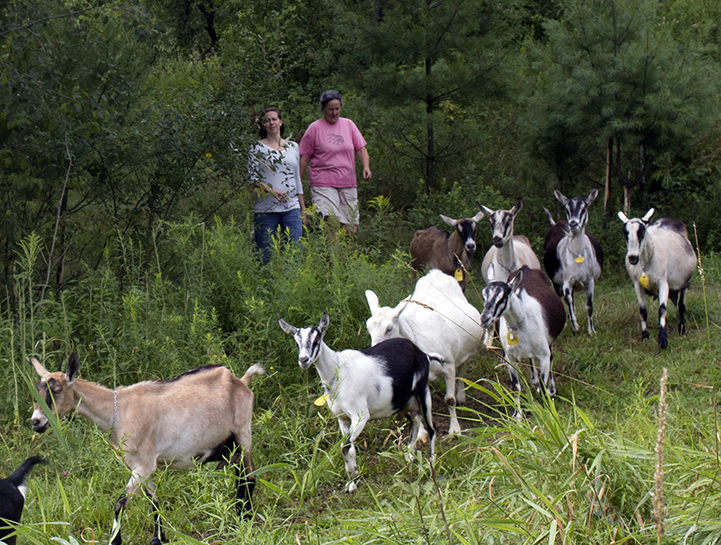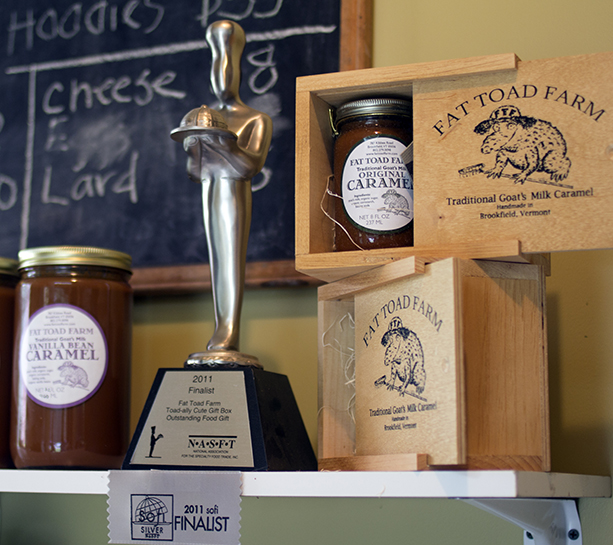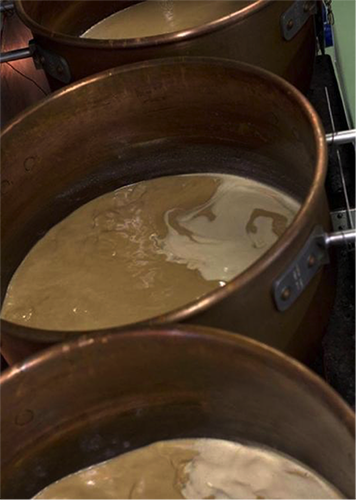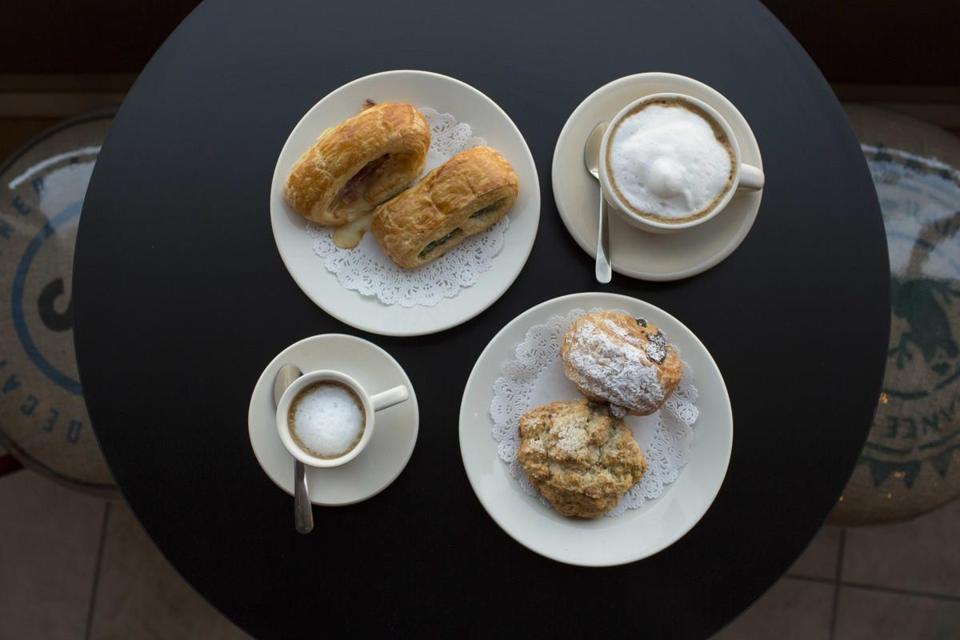Vermont Farm Makes Sumptuous Mexican Sauce with Goat’s Milk
BROOKFIELD, Vt. — Six years ago Fat Toad Farm was transformed by a recipe for goat’s milk caramel sauce that the farmer’s daughter brought back from a long stay in Mexico. At the time, the farm 20 miles south of Montpelier had four goats. Now it has a rollicking 70.
The Baja California Peninsula recipe for Fat Toad cajeta has artisanal cachet because it’s made with local ingredients. The most important one is goat’s milk, of course, which is boiled down to two-thirds its original volume. Cajeta is sumptuously creamy, and can be used where any caramel sauce might be, except that this one is less sweet and more versatile.
Copper pots with cajeta
Visitors to Fat Toad Farm can peer through a picture window to see cajeta being made. It’s a precision operation with innovative product development, and strong ties to neighboring farms, with which Fat Toad barters a variety of products and services. The farm’s signature logo, a fat toad with a rake, was drawn by New Yorker cartoonist Ed Koren, a friend and neighbor.
The recipe changes slightly to adjust to seasonal variations having to do with the type and amount of proteins and fat in the goat’s milk. “A lot of caramel has gone to the pigs in the name of R & D,” says Calley Hastings, whose sister Josey Hastings brought home the Mexican recipe. They work with their mother, Judith Irving, and their stepsister Hannah Reid, and her father, Steve Reid, the herd manager. The original formula has been supplemented with four other flavors: vanilla bean, cinnamon, coffee bean, and most recently, salted bourbon.
The farm day starts early. By 8 a.m., Steve Reid, who has been up for four hours, is milking the last dozen goats. They march up a ramp to the milking parlor, seeking out their feed buckets. “There’s some bosses in the group,” says Calley Hastings. “They’ve got their social order they have to maintain.” Any changes in the herd and “they’re off-kilter for days,” she says.
“Originally we’re a cow state, but there are a lot of new goat herds and many cheese makers,” says Hastings. Goat cheese production had been the original aim, and the farm still produces five types of chevre, but there’s clamoring nationwide for Fat Toad cajeta.
As Reid works, milk gathered from the previous late afternoon’s milking is being simmered down to make the caramel sauce. Six copper caldrons must be stirred every five minutes throughout the five-hour process. The batch is done just as the morning’s fresh milk is being readied for simmering. “It’s the hardest thing in the world, and the funnest,” says Hannah Reid.
The predominantly Alpine goats of all ages approach visitors (the farm is open for tours) with intent and curiosity. There are a lot of names like Jupiter, Moosetrack, and Evangeline to remember. The young ones are so small you can pick one up and hold it like a trophy. The adults are the jesters. When one goat stands on a patch of elevated pasture land, 20 more rush over to wrestle for supremacy. They are attention-seeking pranksters and escape artists, and pushovers for affection. “We keep the babies with their mothers,” says Irving. “We have mothers and grandmothers and great-grandmothers that graze and sleep together.”
The sweet, earthy-tasting caramel can be used to sauce berries or other fruits, or as a glaze or marinade for grilled fish or meats. At Fat Toad family meals, the sauce is served over steamed beans with toasted pecans. A local chef combines it with a chipotle rub for salmon steaks.
It’s also part of Irving’s morning elixir. She mixes a pint of fresh goat’s milk with a big dollop of cajeta and unsweetened cocoa powder. “It’s yummy and nutritious. It gets me through the first three hours of work,” she says.
Fat Toad Farm 787 Kibbee Road, Brookfield, Vt. Open to visitors. Call 802-279-0098, or go to www.fattoadfarm.com






